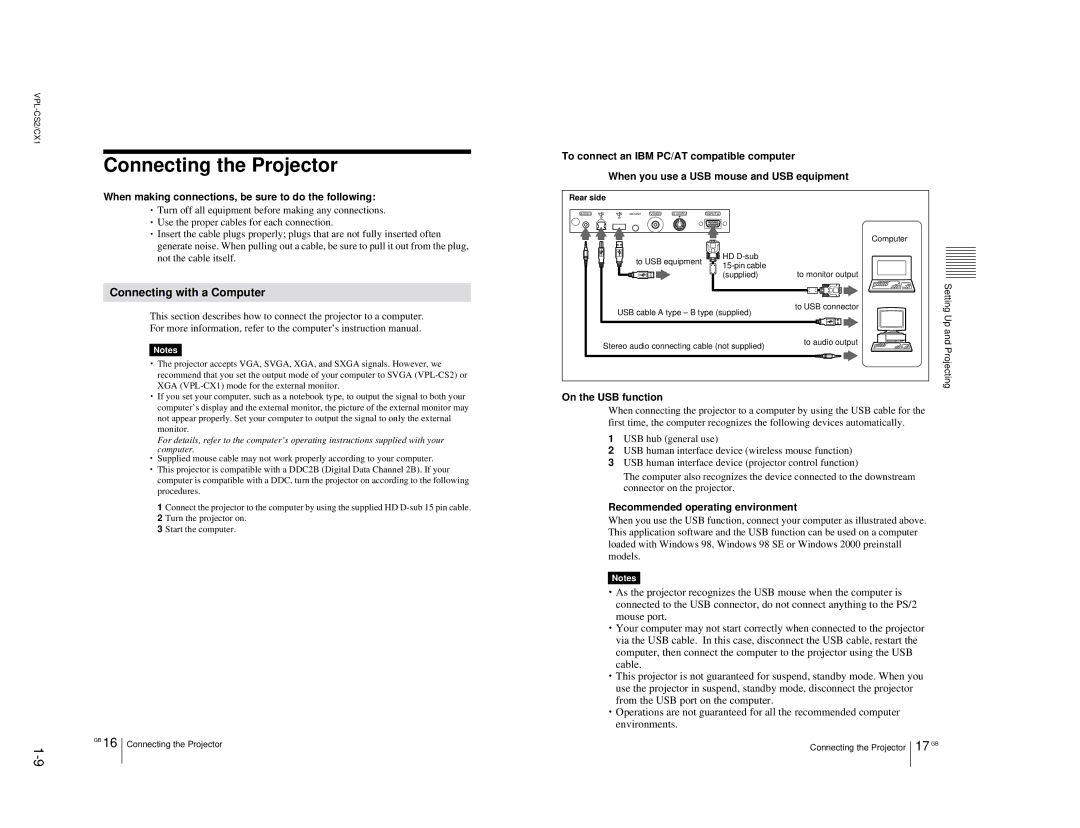RM-PJM10, VPL-CX1 specifications
The Sony VPL-CX1 is a compact and lightweight portable projector designed to deliver high-quality performance in various settings, including business presentations, educational environments, and home entertainment. Its versatility combined with a user-friendly interface makes it an excellent choice for professionals on the go or institutions looking to enhance their audiovisual presentations.One of the standout features of the VPL-CX1 is its impressive brightness, boasting 3000 ANSI lumens. This level of brightness ensures that images remain vivid and clear even in well-lit environments, minimizing the need to dim lights during presentations. The projector utilizes a native XGA resolution of 1024 x 768 pixels, providing sharp images that enhance the viewing experience.
The VPL-CX1 incorporates advanced 3LCD technology, which provides excellent color reproduction and reduces the risk of color degradation over time. This technology ensures that colors are accurate and vibrant, making it ideal for displaying rich images, detailed graphics, and dynamic video content.
Another key characteristic is its connectivity options. The VPL-CX1 comes equipped with multiple inputs, including VGA, HDMI, and RCA, allowing for easy connection to a variety of devices such as laptops, DVD players, and even smartphones. This level of flexibility ensures seamless transitions between different sources during presentations.
Portability is a significant aspect of the VPL-CX1's design. Weighing just over 4.5 pounds and featuring a compact form factor, it is easy to transport and set up in various locations. The inclusion of a carrying case allows users to protect the device while on the move.
The RM-PJM10 remote control enhances the user experience by providing convenient access to essential functions from a distance. Users can easily navigate through settings, control volume, and switch input sources without needing to approach the projector.
In summary, the Sony VPL-CX1, supported by the RM-PJM10 remote, is a powerful, portable projector that combines brightness, color accuracy, and versatile connectivity. Its lightweight design makes it ideal for on-the-go professionals, educators, and home users alike. With its advanced technologies and user-friendly features, the VPL-CX1 is well-suited for delivering impactful presentations and enjoyable visual experiences.

